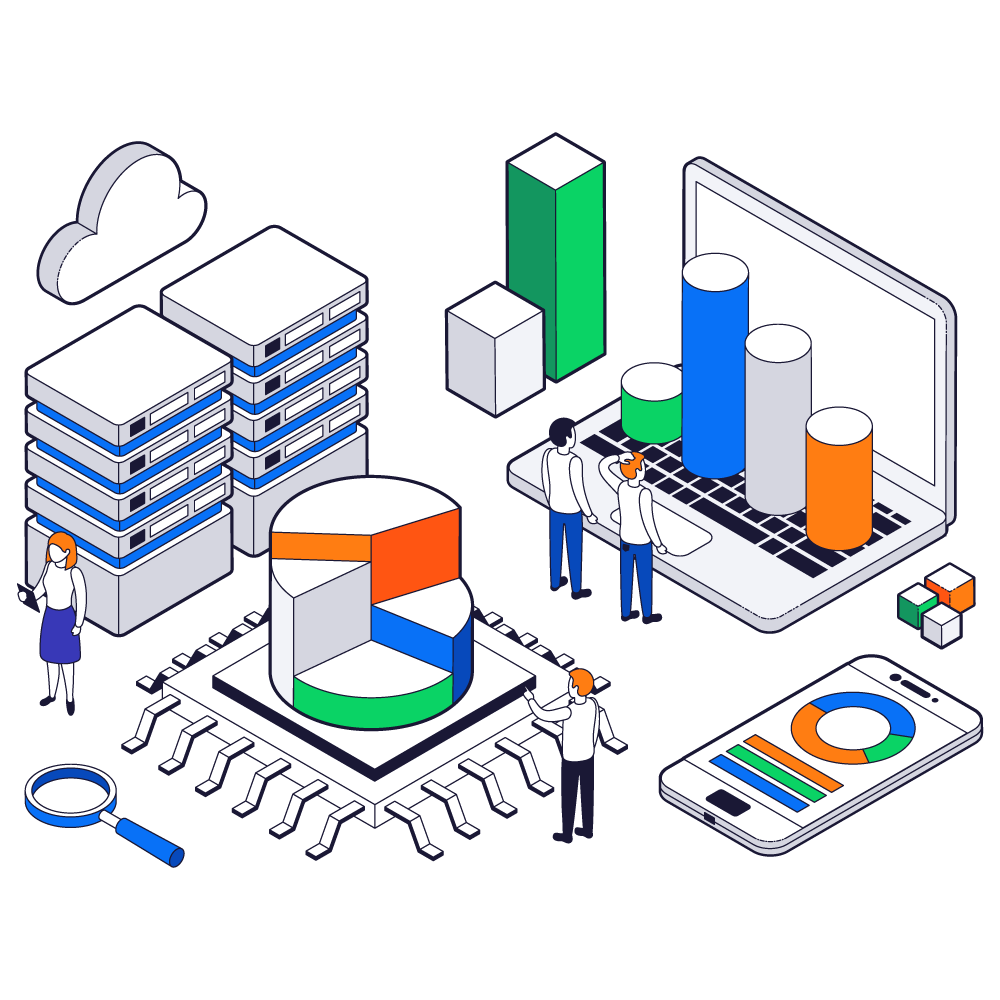Machine Learning Transforming Big Data Analytics
In the era of digital transformation, the sheer volume of data generated every second is staggering. From social media interactions to sensor data from IoT devices, organizations are inundated with vast amounts of information. This is where big data analytics comes into play—helping businesses make sense of this data. However, the real game-changer is the integration of machine learning (ML) with big data . By applying ML algorithms to massive datasets, companies can unlock deeper insights, drive innovation, and gain a competitive edge. In this blog post, we’ll explore how machine learning is transforming big data and the profound impact it has on modern businesses.

1. The Intersection of Machine Learning and Big Data
Overview: Machine learning, a subset of artificial intelligence (AI), involves training algorithms to learn from data and make predictions or decisions without being explicitly programmed. Big data, on the other hand, refers to large, complex datasets that traditional data processing tools struggle to handle. When combined, machine learning and big data create powerful tools for extracting valuable insights from vast amounts of information.
Key Concepts:
- Algorithms: ML algorithms such as decision trees, neural networks, and clustering methods analyze data patterns.
- Scalability: ML models can scale to analyze terabytes of data, making them ideal for big data environments.
- Automation: ML automates the process of data analysis, reducing the need for manual intervention and speeding up insights generation.
Why It Matters: The combination of machine learning and big data allows organizations to uncover hidden patterns, trends, and correlations that would be impossible to detect manually, leading to more informed decision-making.
2. Enhancing Data Processing with Machine Learning
Overview: One of the most significant ways machine learning is transforming big data is by enhancing data processing capabilities. Traditional data processing methods can be slow and inefficient when dealing with massive datasets. Machine learning algorithms, however, can quickly analyze and process large volumes of data, identifying relevant patterns and insights.
Key Applications:
- Data Cleansing: ML algorithms can automatically detect and correct errors in datasets, ensuring high-quality data for analysis.
- Data Integration: Machine learning can be used to merge data from multiple sources, creating a unified dataset for comprehensive analysis.
- Real-Time Processing: ML algorithms can analyze data in real-time, enabling businesses to respond quickly to changing conditions.
Why It Matters: By improving data processing, machine learning allows organizations to analyze data more efficiently and accurately, leading to faster and more reliable insights.
Also Read: Data Processing with Machine Learning
3. Predictive Analytics: Anticipating the Future
Overview: Predictive analytics is a significant area where machine learning shines in big data. By analyzing historical data, machine learning models can predict future trends, behaviors, and outcomes. This capability is invaluable for businesses looking to anticipate market changes, customer needs, and potential risks.
Key Examples:
- Customer Behavior Prediction: ML algorithms analyze past customer interactions to predict future behavior, helping businesses tailor marketing strategies.
- Demand Forecasting: Machine learning models can predict product demand, enabling companies to optimize inventory management and reduce waste.
- Risk Management: In finance, ML models can predict potential risks, such as credit default or fraud, allowing institutions to take proactive measures.
Why It Matters: Predictive analytics powered by machine learning gives businesses a strategic advantage by enabling them to anticipate and prepare for future developments, leading to better decision-making and resource allocation.
Also Read: Predictive Analytics in Business
4. Personalization and Customer Insights
Overview: In today’s customer-centric world, personalization is key to business success. Machine learning algorithms analyze big data to understand individual customer preferences, behaviors, and needs, enabling businesses to deliver highly personalized experiences.
Key Applications:
- Recommendation Systems: E-commerce platforms use ML algorithms to recommend products based on past purchases and browsing history.
- Targeted Marketing: Machine learning models segment customers into distinct groups, allowing businesses to create targeted marketing campaigns.
- Customer Churn Prediction: By analyzing customer data, ML algorithms can predict which customers are likely to leave, enabling businesses to take preventive action.
Why It Matters: Personalization driven by machine learning enhances customer satisfaction, loyalty, and lifetime value, providing businesses with a competitive edge in crowded markets.
Also Read: Personalization with Machine Learning
5. Business Intelligence and Decision-Making
Overview: Machine learning is also transforming business intelligence (BI) by automating the analysis of big data and providing actionable insights. Traditionally, BI relied on static reports and dashboards. Today, ML-powered BI tools offer dynamic insights that evolve as new data is collected.
Key Examples:
- Anomaly Detection: ML algorithms can detect unusual patterns in data, alerting businesses to potential issues before they escalate.
- Sentiment Analysis: Machine learning models analyze social media and customer feedback to gauge public sentiment about a brand or product.
- Optimization: Businesses use ML to optimize operations, such as supply chain management, pricing strategies, and workforce allocation.
Why It Matters: By integrating machine learning with business intelligence, organizations can make more informed decisions, respond quickly to emerging trends, and maintain a competitive advantage.
Also Read: Business Intelligence with Machine Learning
6. Challenges and Considerations
Overview: While the benefits of combining machine learning with big data analytics are clear, it’s important to recognize the challenges involved. These include the need for large, high-quality datasets, the complexity of implementing ML models, and the risk of bias in algorithms.
Key Challenges:
- Data Quality: Machine learning models require clean, well-organized data to produce accurate results. Poor data quality can lead to incorrect insights.
- Model Complexity: Developing and fine-tuning ML models can be complex, requiring specialized skills and significant computational resources.
- Bias and Ethics: Machine learning models can perpetuate biases present in the data, leading to unfair or unethical outcomes.
Why It Matters: Addressing these challenges is crucial for ensuring that machine learning enhances big data analytics in a way that is reliable, ethical, and beneficial for all stakeholders.
Also Read: Challenges in Machine Learning
7. The Future of Machine Learning in Big Data Analytics
Overview: The future of big data analytics is inextricably linked to the continued advancement of machine learning. As ML algorithms become more sophisticated and capable, they will unlock even deeper insights from data, driving innovation across industries.
Key Trends:
- Automated Machine Learning (AutoML): AutoML tools are making it easier for non-experts to develop and deploy ML models, democratizing access to advanced analytics.
- Edge Computing: Machine learning is moving to the edge, enabling real-time data analysis on devices such as sensors and IoT devices, reducing latency and bandwidth usage.
- Explainable AI: As machine learning models become more complex, there is a growing focus on making them explainable, ensuring transparency and trust in AI-driven decisions.
Why It Matters: Keeping up with these trends is essential for businesses looking to stay competitive in a data-driven world. Machine learning will continue to be a critical tool for extracting value from big data, enabling organizations to innovate and thrive.
Also Read: The Future of Machine Learning
Conclusion
Machine learning is revolutionizing big data analytics by enhancing data processing, enabling predictive analytics, and driving business intelligence. As these technologies continue to evolve, businesses that leverage the power of machine learning in their data analytics will be well-positioned to unlock new insights, drive innovation, and maintain a competitive edge in the digital economy. However, it is essential to address the challenges associated with machine learning, ensuring that its application is both effective and ethical.
More to explore
- An Introduction to Machine Learning: Understanding Its Impact on Technology
- The Role of Big Data in Shaping the Future of Businesses
- How to Navigate a Tech Career Change: Tips for Success
Related
Discover more from Computer Climax
Subscribe to get the latest posts sent to your email.






One Response